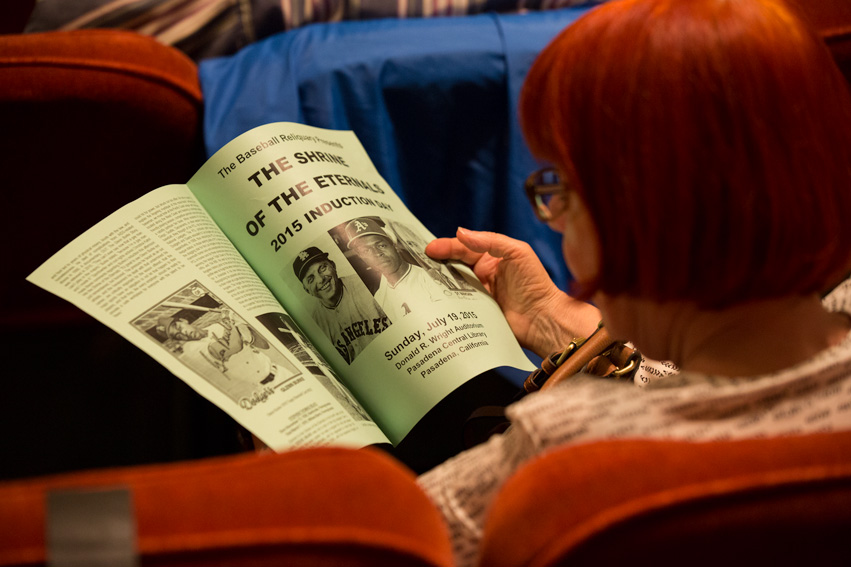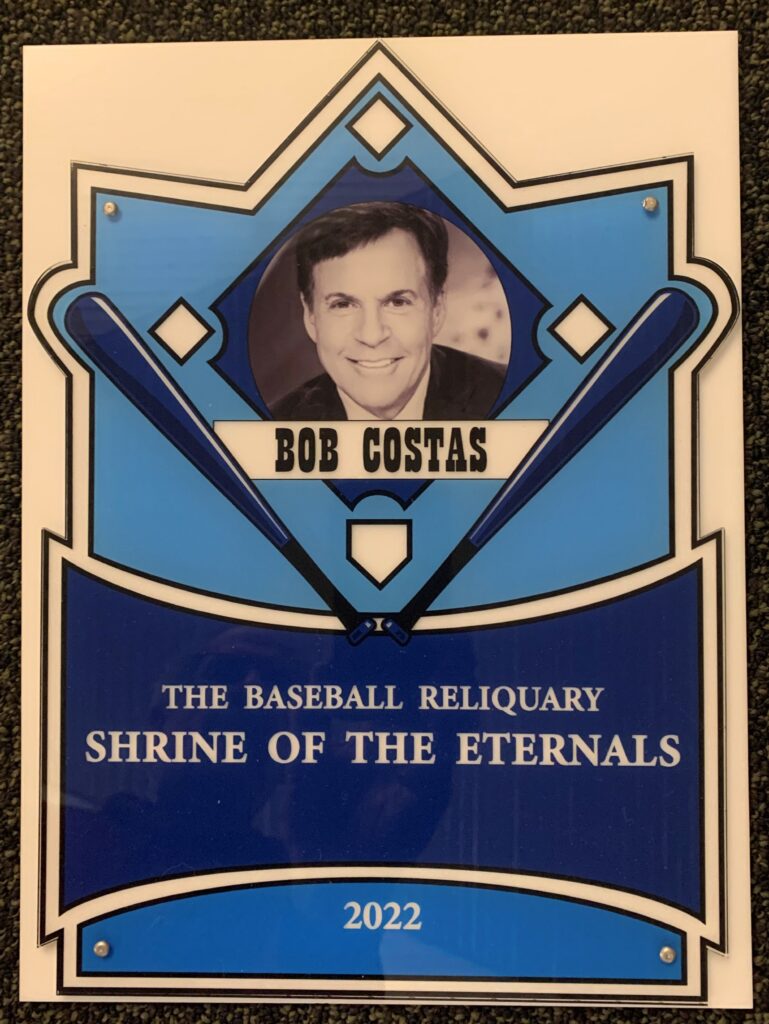In 2001, after two years of work, artist Michael Guccione completed a commission by the Baseball Reliquary to create an icon painting depicting Jackie Robinson as a 20th century saint. That work, one of the most important pieces in the collection of the Baseball Reliquary, is on permanent view at the Jackie Robinson Center, Pasadena, California.
Nearly two decades later, Guccione has returned to icon painting in a baseball context with a new work devoted to Ray Chapman, the much beloved Cleveland Indians shortstop who, in 1920, became the first and only batter to be killed by a pitched ball in the long history of major league baseball.
The Baseball Reliquary is honored to serve as the repository for this new addition to Michael Guccione’s gallery of baseball saints. Guccione spent one year working on the Chapman icon (oil on board, 17 x 14 in.), completing it in October 2018. The following statement by the artist provides further insight into his unique rendering and effort to move sainthood into the real world:
“The year is 34 A.D., centuries before the invention of the spitball. A man is intentionally walked to the outskirts of a city; he is 29 years of age and has just invoked the outrage of the theological powers that be. Both righties and southpaws reach down for what were rosin bags at the time to make their grips true on fragments of rock. Moments later, Stephen, whose name means wreath or crown, is stoned to death by a mob of beanballing headhunters, making him the very first martyr of Christianity.
“The years pass to the Jazz Age of 1920, August 16th, a dark, cloudy day at the Polo Grounds. The New York Yankees are hosting the first-place Cleveland Indians. Pitcher Carl Mays, who is among the league leaders in hitting batters and hated by opposing players and teammates alike, is in the top of the fifth inning trailing 3-0. Cleveland shortstop Ray Chapman comes up to the plate, the count goes to one ball and one strike. When Mays releases the next pitch with his signature contorted and underhanded delivery style, an ‘explosive sound’ reaches right fielder Babe Ruth as well as the crowd. The ball rolls back to the mound, Mays fields it, and throws to first not realizing that it had struck Chapman’s head. With blood coming out of his left ear, Chapman manages to get to his feet only to collapse on the way to the clubhouse. He shows signs of revival at the hospital but dies the next day, also at the age of 29, becoming the first and only major league baseball fatality due to a pitched ball. The impact of the pitch had left a three-inch fracture in his skull.
“When beginning work on the Ray Chapman icon, I decided to use the St. Stephen story as a compositional template while wanting to be stylistically true to the first Baseball Reliquary icon of Jackie Robinson I had done years earlier. The sudden fatal events the two men shared were too striking to ignore, giving me cause to borrow St. Stephen’s emblem of the stone which is featured prominently in the piece. Sadly, the tragedy of Chapman extended beyond himself; his wife Kathleen, who was pregnant at the time of his death, never attended another game after the tragedy. She committed suicide some years later, and his daughter Rae-Marie was the victim of a measles outbreak at the age of eight. I can’t view the piece without thinking of them as well.”





